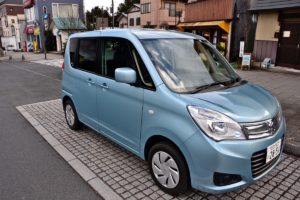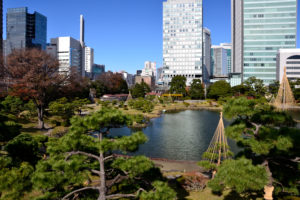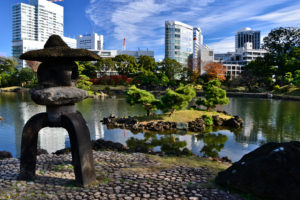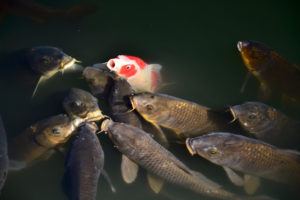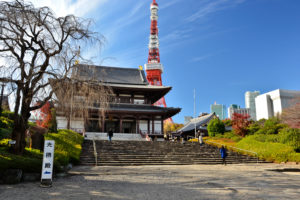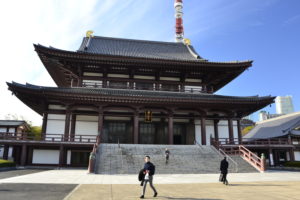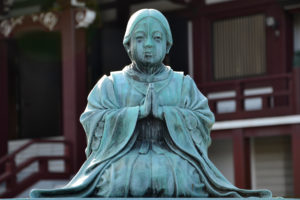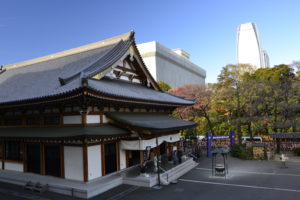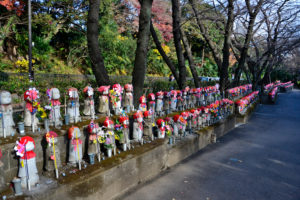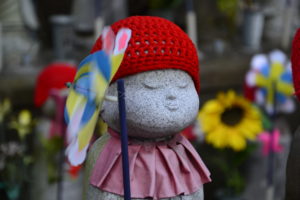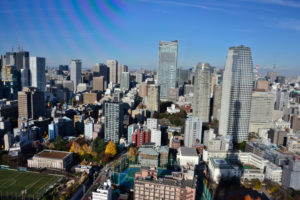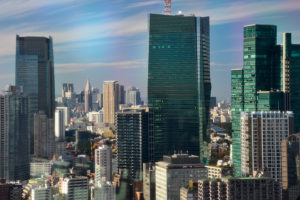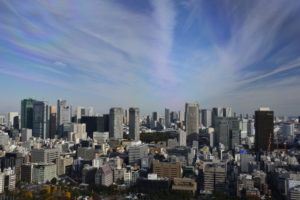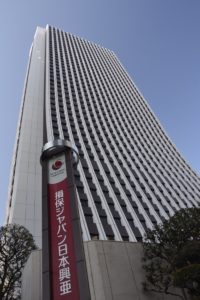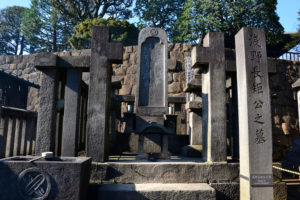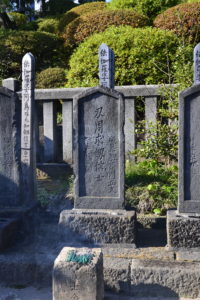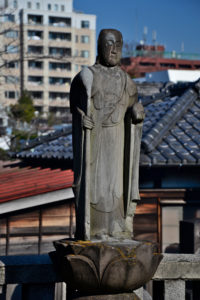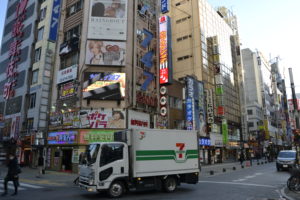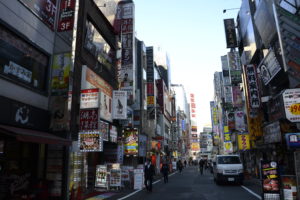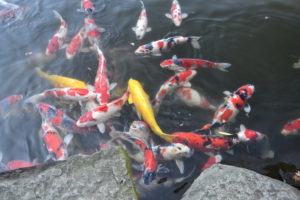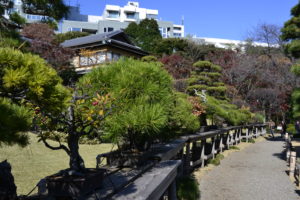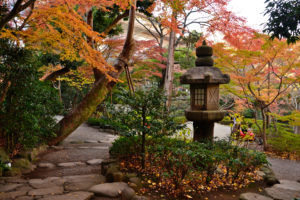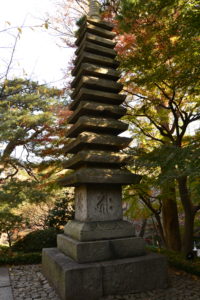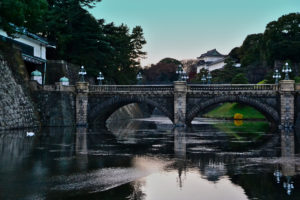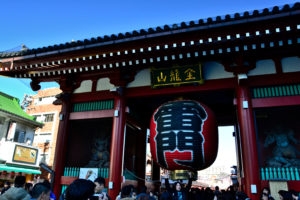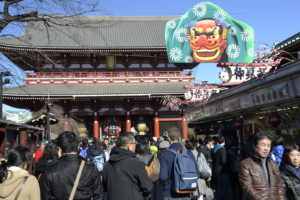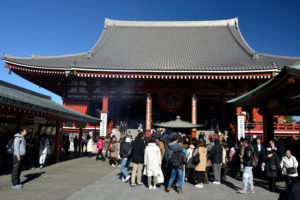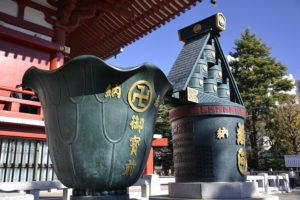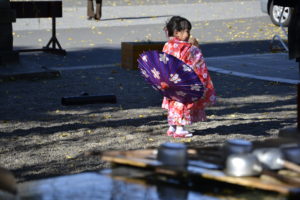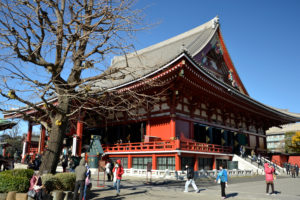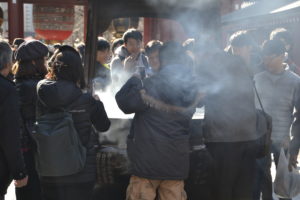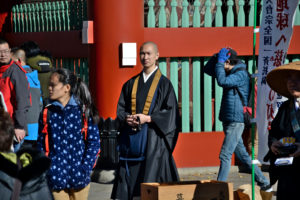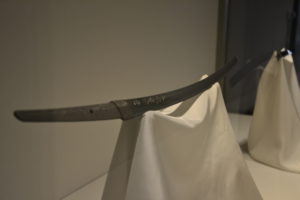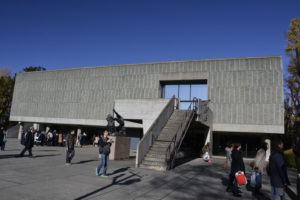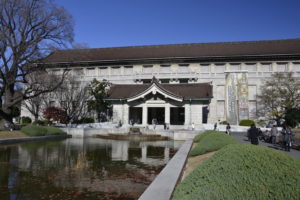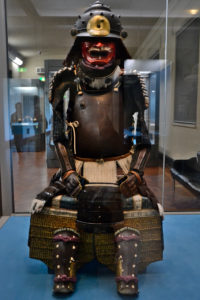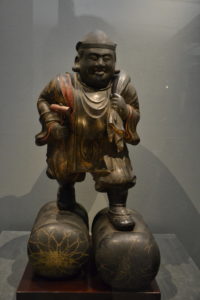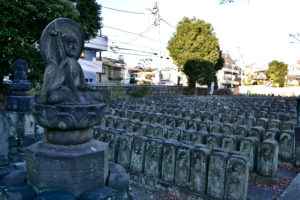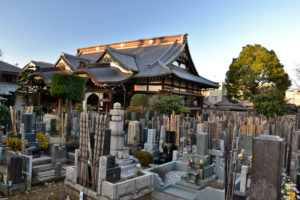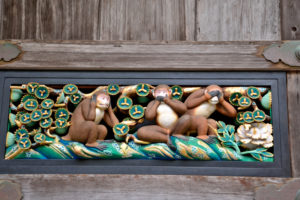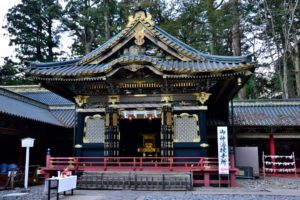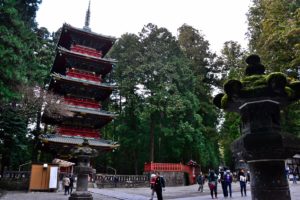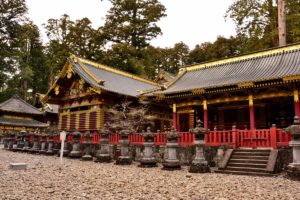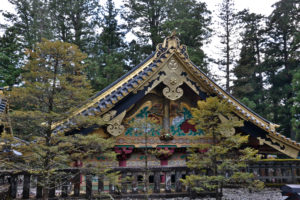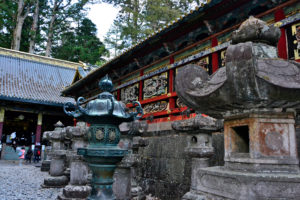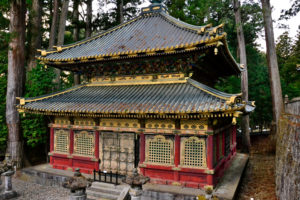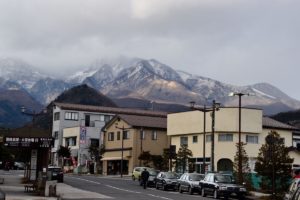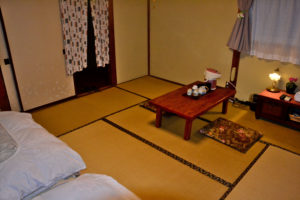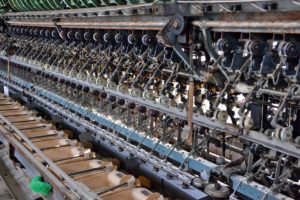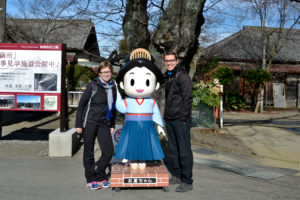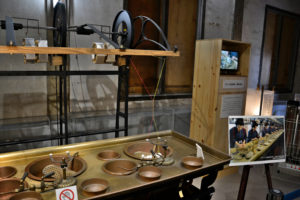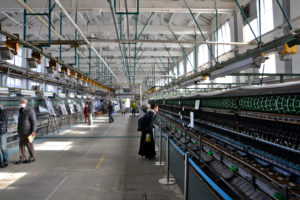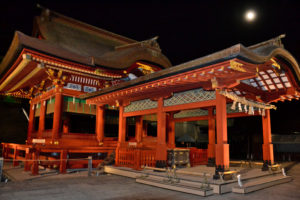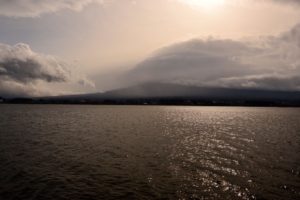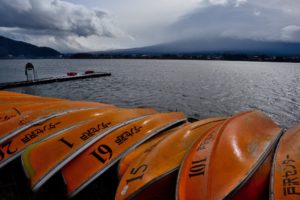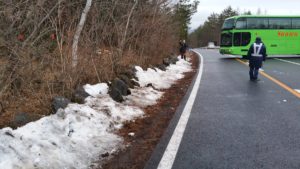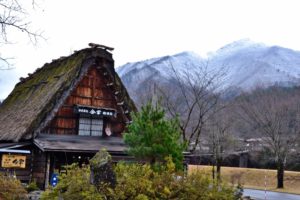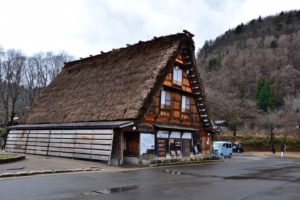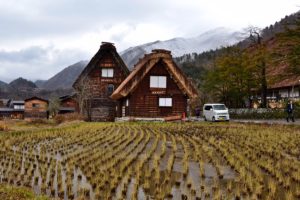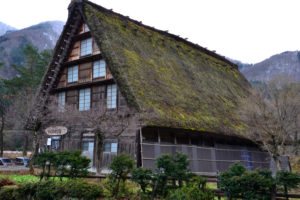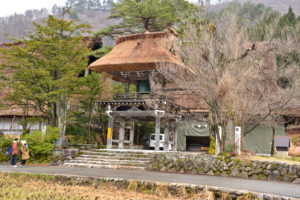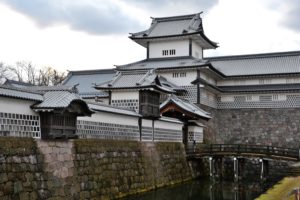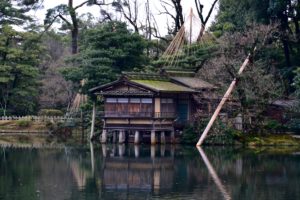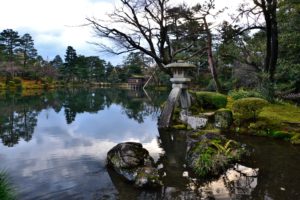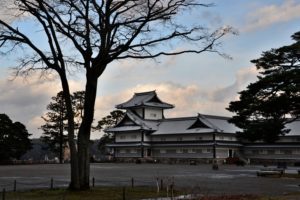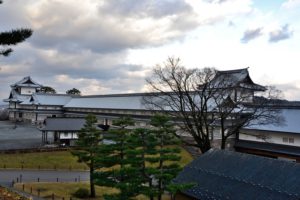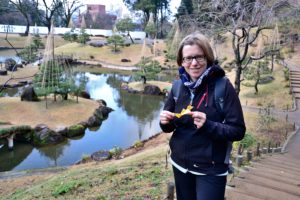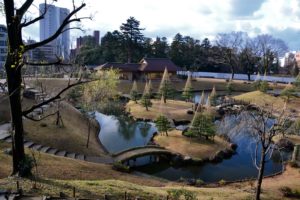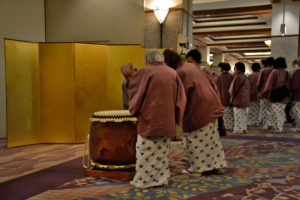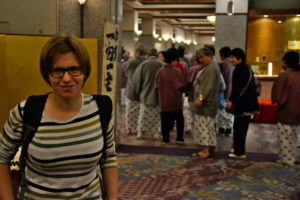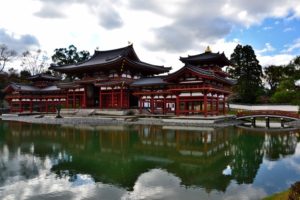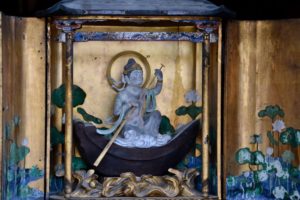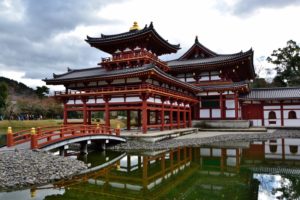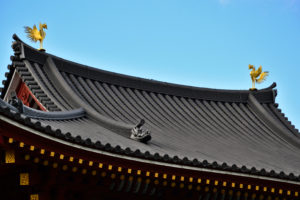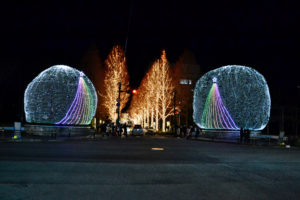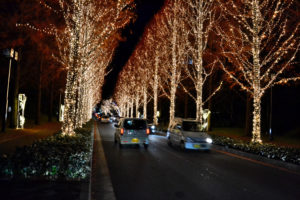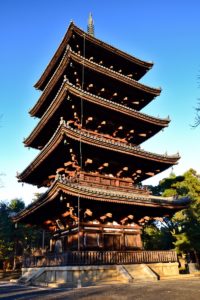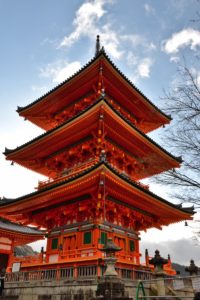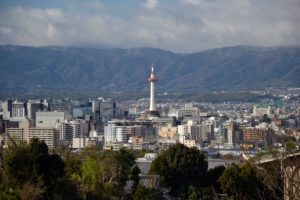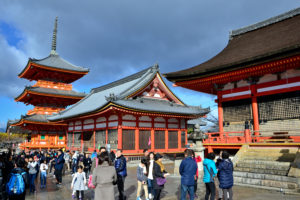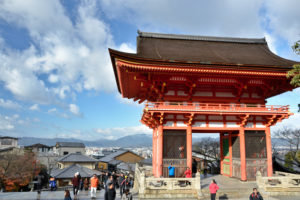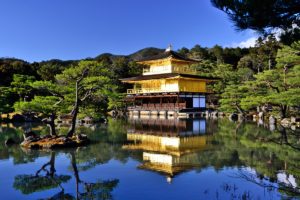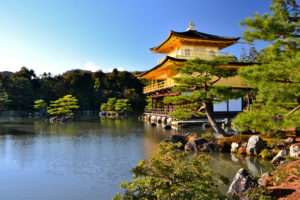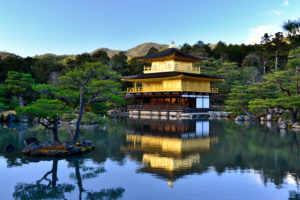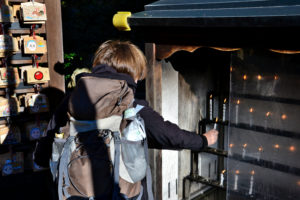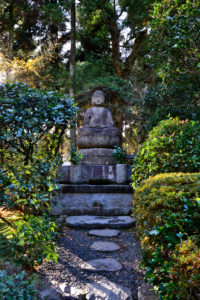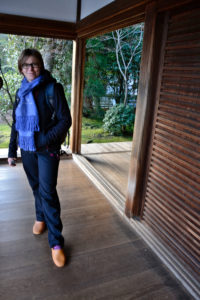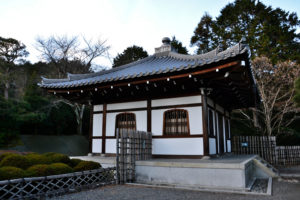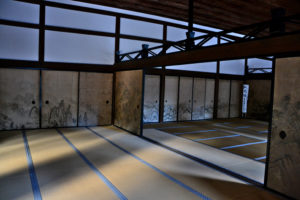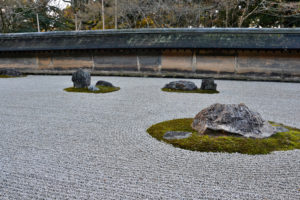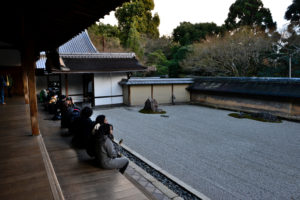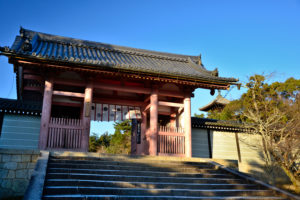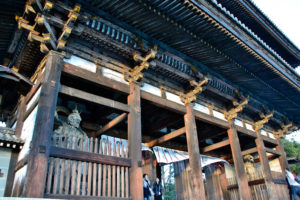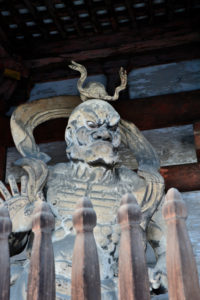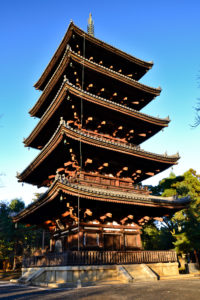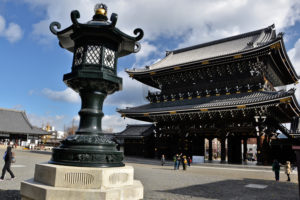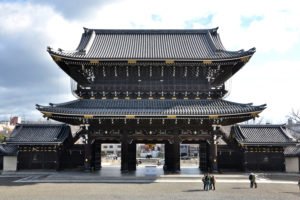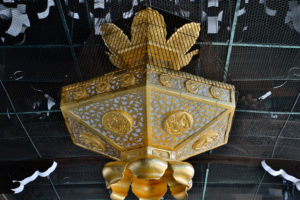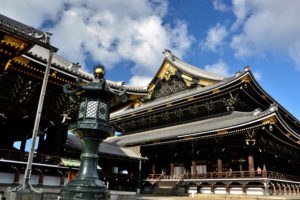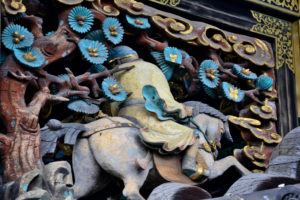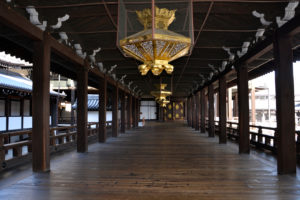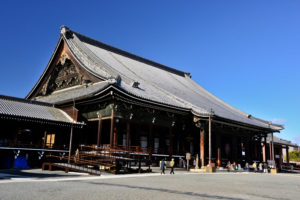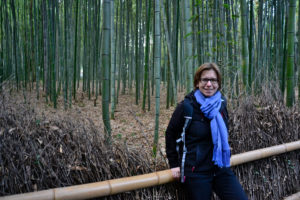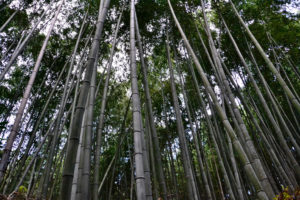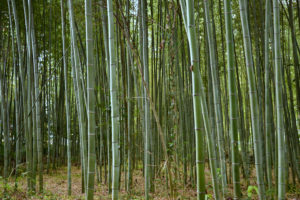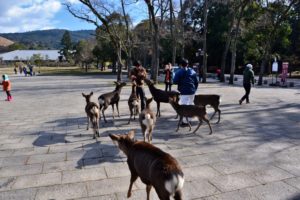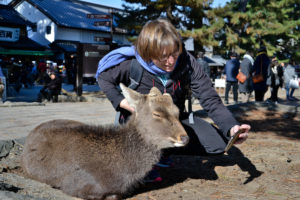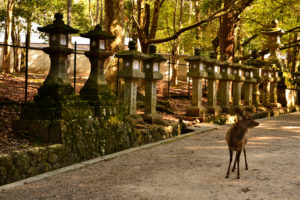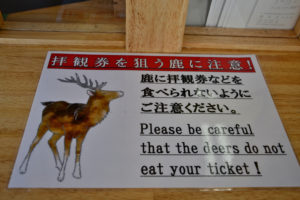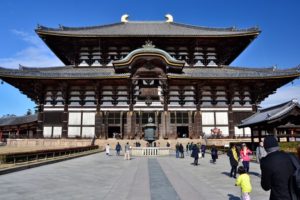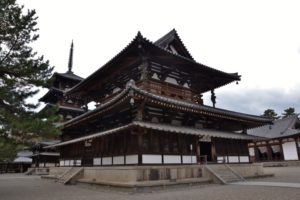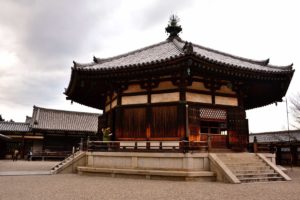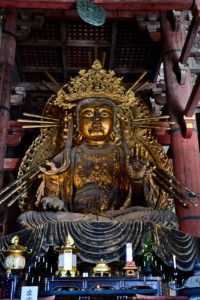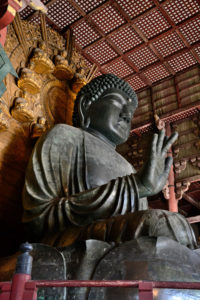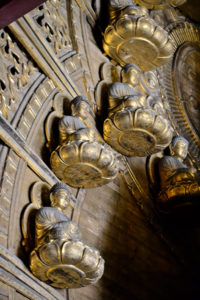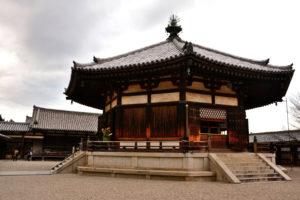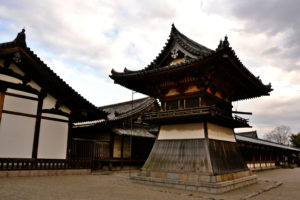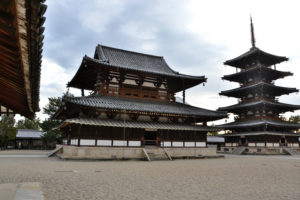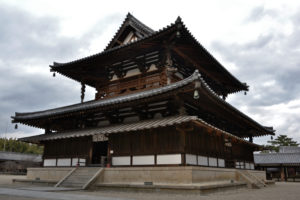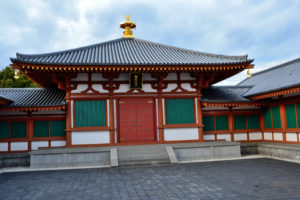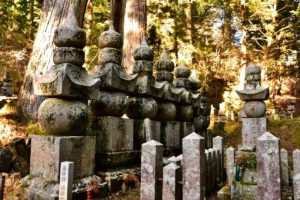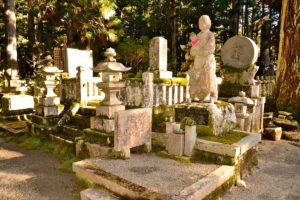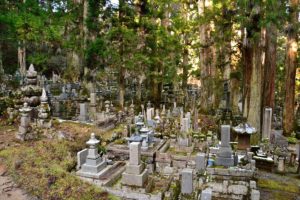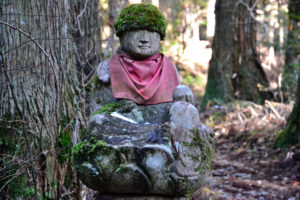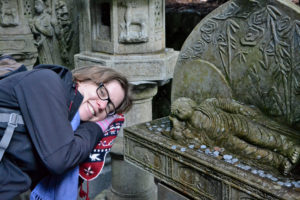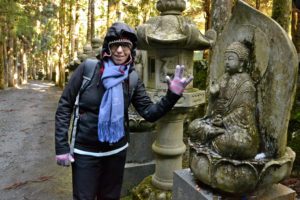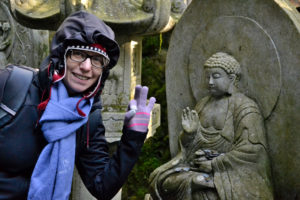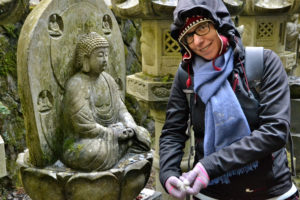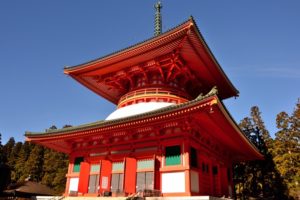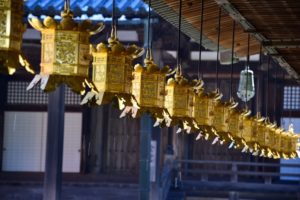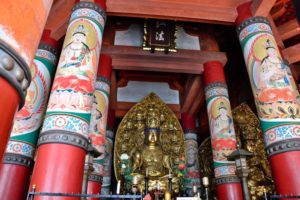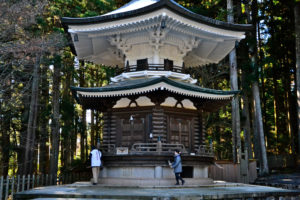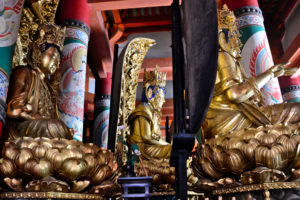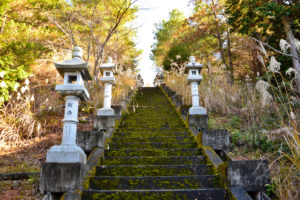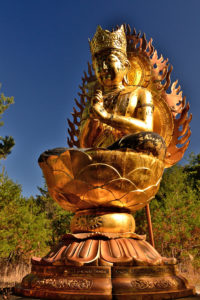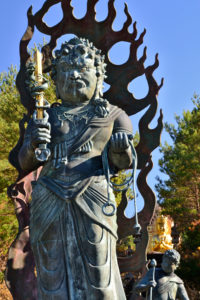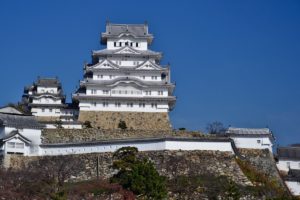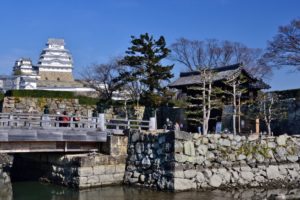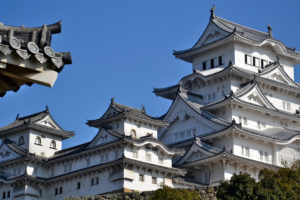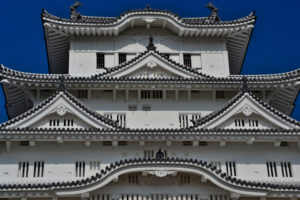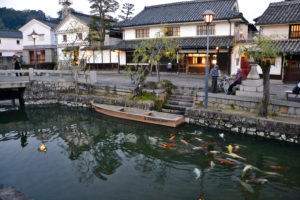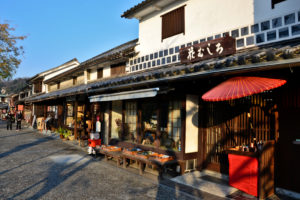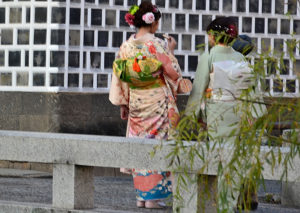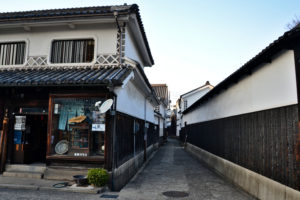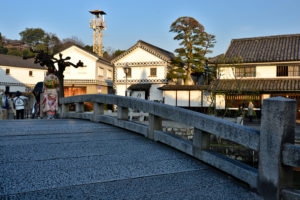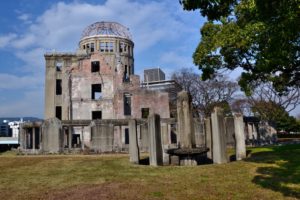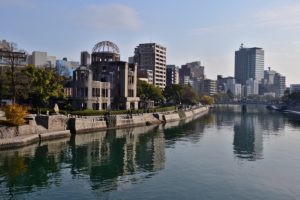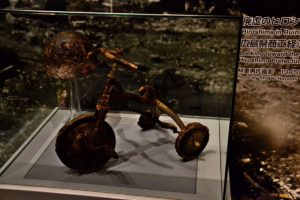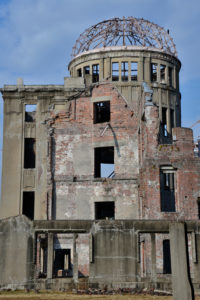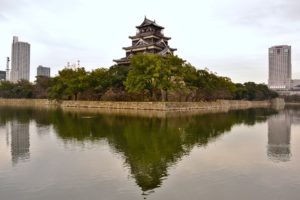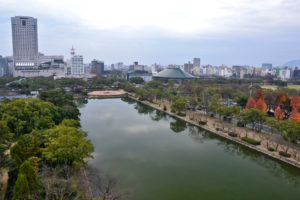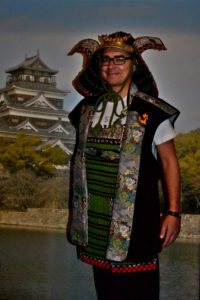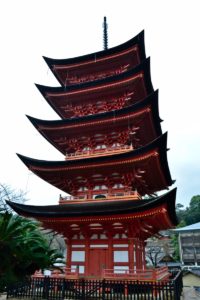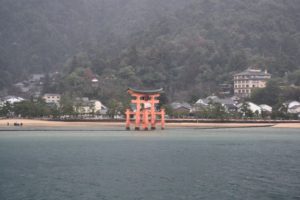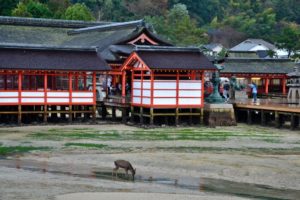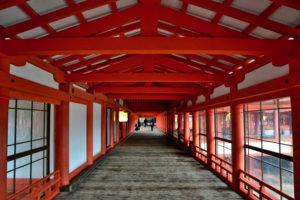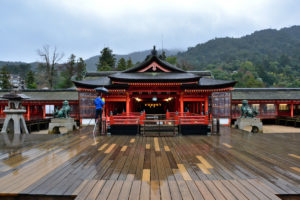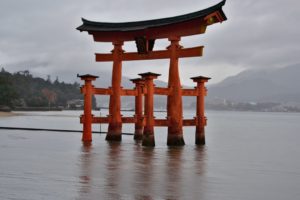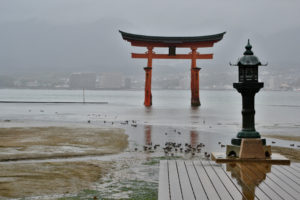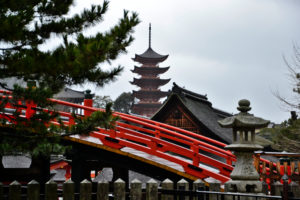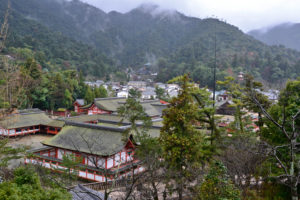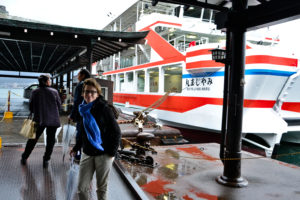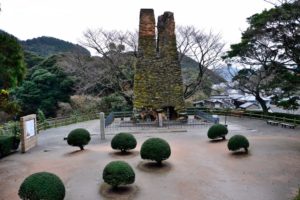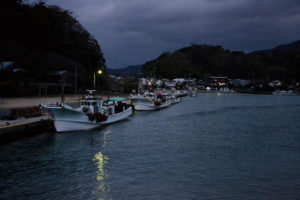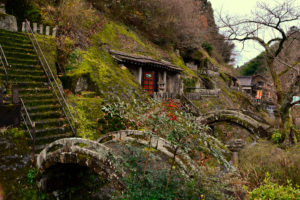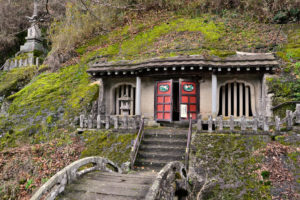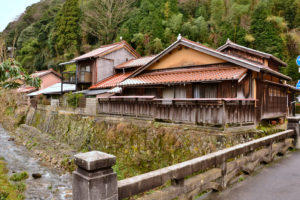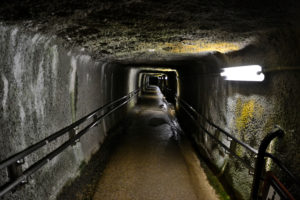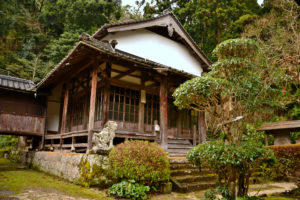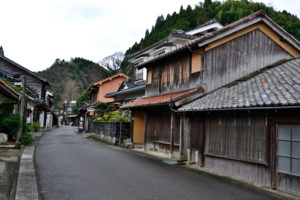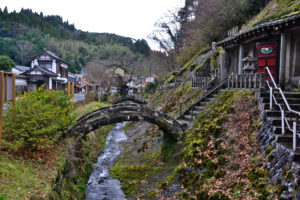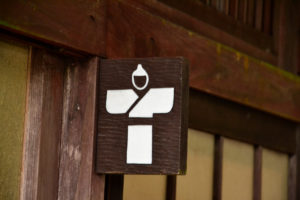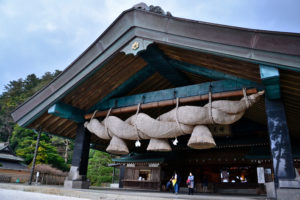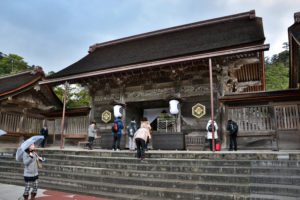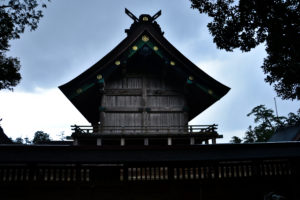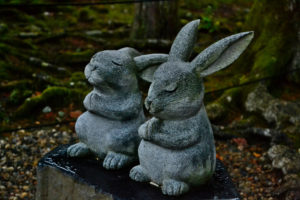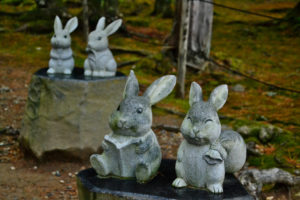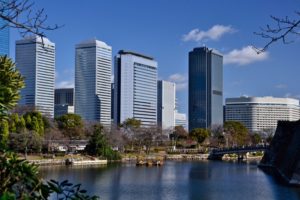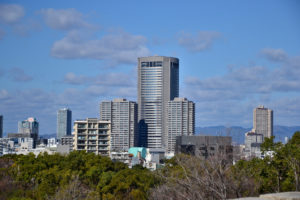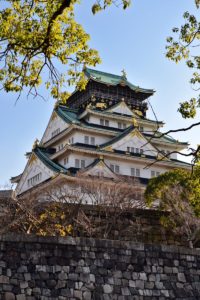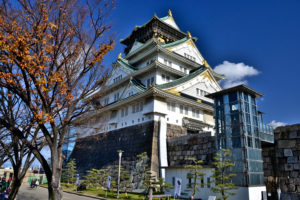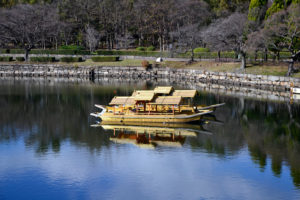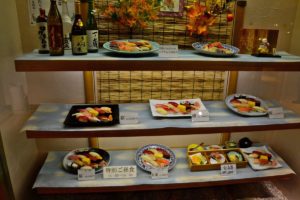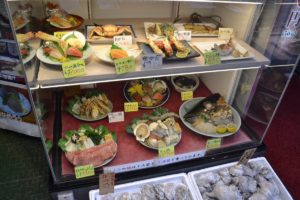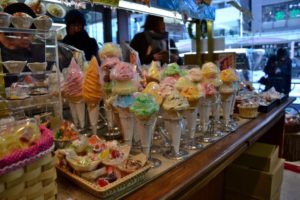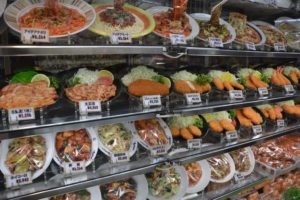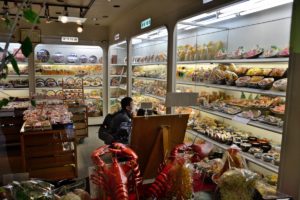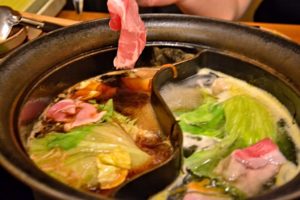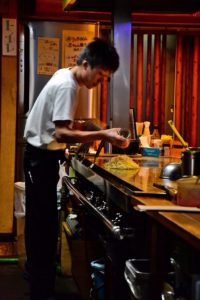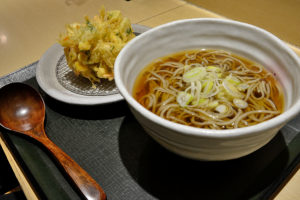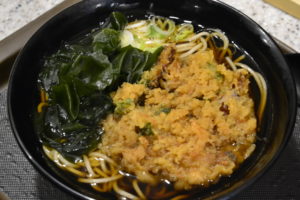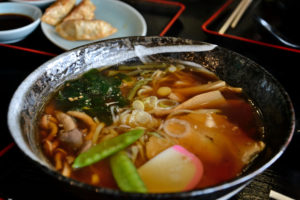
Japan Travel Tips
Welcome to our travel guide for globetrotters & UNESCO enthusiasts – discover the top travel tips for Japan – we promise to you that you will love Japan’s culture, architecture, landscapes and the exceptionally delicious food.
Content
Tips for planning your Japan trip
Our route through Japan by rental car
Our most beautiful destinations in Japan
Tokyo
Nikko (UNESCO World Heritage)
Tomioka Silk Mill (UNESCO World Heritage)
Kamakura
Fujisan (UNESCO World Heritage)
Japanese Alps / Shirakawago (UNESCO World Heritage)
Kanazawa
Uji (UNESCO World Heritage)
Kyoto (UNESCO World Heritage)
Nara (UNESCO World Heritage)
Horyuji (UNESCO World Heritage)
Koyasan (UNESCO World Heritage)
Himeji Castle (UNESCO World Heritage)
Kurashiki
Hiroshima (UENSCO World Heritage)
Miyajima / Itsukushima Shrine (UNESCO World Heritage)
Hagi (UNESCO World Heritage)
Iwami Ginzan (UNESCO World Heritage)
Izumo
OsakaOur recommendations
How to get there?
The first time we visited Japan was on our all-around-the-world trip in December 2016. On 7th December 2016, we arrived in Tokyo – back on earth’s northern hemisphere for a long time. Just sweated in Australia at 35 degrees – now freezing in Japan at minus 2 degrees Celsius with the first snow flakes we had in Nikko some days later. From Cairns we have taken a Jetstar Asia flight to Tokyo that took around eight hours. This was our first flight with Jetstar Asia and we can really recommend this low cost airline since we had afterwards a couple more with Jetstar. Our flight to Tokyo was around St. Nicholas’ Day what prompted the airline to distribute Nicholas hats…
Japan is a cultural shock after the extrovert Latin Americans and the very communicative New Zealanders and Australians. From a technological point of view we can learn a lot: hot coffee cans from vending machines, heated toilets, easy system to choose the dishes without knowing the language… and these are only the things we have discovered in our first days here.
Our route through Japan
We stayed 18 days in Japan and tried to see at last some of the cultural highlights in that timeframe. Nikko was our most northern point and from there we drove to the South with the hope to have a little bit of warmer temperatures.
Our experience of self driving in Japan
For renting a self-driving car we needed a Japanese translation of our international driver licenses. This is available at the Japan Automobile Federation (JAF) for around 30 Euros per driver license. This lasts approx. one day so plan enough time before picking up the car. It is not surprising that Japan is expensive. But we were astonished paying the highway fee for 150 km from Tokyo to Nikko with approx. 40 Euros. Based in our plan to drive more than 2,500 km this will sum up to a huge amount.
The amount of money we have spent for toll and parking surprised us definitively: about 500 euros for toll and additional 150 Euros as car parking fee. We had several hotels without free parking. Next time we will also check this option at booking.com. This is in total more compared to the amount we have spent for our meals in Japan. Also other countries had a toll system but this amount exceeds everything what we have experienced so far, e.g. in Chile for comparable number of kilometers we only paid 80 Euros.
We got a typical Japanese car as rental car and it looks like a shoebox. However, we have to admit that the car is practical: in which other car – despite our campervan – is it possible to walk from the front to the back inside the car? But with this car it doesn’t matter that the maximum speed on the quite empty but three lanes highway is only 80 to 100.
Our travel experience and travel tips for Japan
Tokyo
We have started our tour through Japan in Tokyo. Despite our itinerary being fully packed for the three days, we are sure we have not seen all interesting sights of this huge metropole with more than nine million residents. But the metro is very efficient and a fantastic way to get around with trains running every three to five minutes and it’s many different lines. We were surprised seeing not so many people on the streets in the city and cars on the streets as expected in such a populated area. Exciting is also the mixture of traditional temples and fancy skyscrapers.
Kyu-Shiba-rikyu Gardens Tokyo
We started our exploration of Tokyo with a typical Japanese garden. The one we have chosen is close to the Hamamatsucho station. This small beautiful garden allows you to get a sense of what a typical Japanese landscape garden incl. a lake with koi fishes is like in a fairly short amount of time, and is a great place to stop and take a break from the surrounding metropolis. This garden is one of the oldest one in Tokyo. From this park you can also see one of the first skyscraper of Tokyo – the World Trade Center.
Zojo-ji Temple
From the Kyu-Shiba-rikyu Gardens we walked further to the Shiba park with the temples Zojo-ji. The temple was founded in 1393 and is the main quarter of this Buddhist school. At the end of the temple area you can see many small stone figures wearing a red knit hat. These are for deceased early in life children. According to Japanese folk belief, red is the color for expelling demons and illness. The red heads shall help the children in their afterlife.
Tokyo Tower
In the pictures from the Zojo-ji temple you might have already seen the Tokyo tower with its red and white stripes that looks like a copy of the Eiffel tower in Paris. However, if something is copied in Japan, it needs to be better than the original. Therefore, the Tokyo Tower is with its 333 meter around 13 meters higher than the original but has only half of the weight. The tower was finished in 1958. We have taken the escalator up to the viewing platform in 150 meters and enjoyed the incredible sweeping view of Tokyo. There is even a visitor deck at the height of 250 meters however, the view on the 150 meter deck is said to be better.
Shinjuku district
This district combines much of the things that will come to one’s mind when thinking of Tokyo: upscale department stores, swarming crowds, video screens on the streets, amazing skyscrapers with hidden shrines in-between. The train station is used by 2-3 mn commuters every day and is therefore one of the busiest in the world. Tokyo’s municipal government has also moved in this area in 1991. Some really photogenic towers can be seen in that district, like the Mode Gakuen Cocoon Tower.
47 Ronins of Ako or Ako Gishi / Sengaku-ji
The graves of 47 samurais are located in the temple Sengaku-ji. This grave site is more than 300 years old.
Shibuya Crossing and area
This crossing is an awesome spectacle with giant video screens… Around the crossing you will see numerous neon signs and video screens in an almost uncountable number. Unbelievable also the number of people crossing here every second.
Happo-en Garden
Another traditional garden we recommend to visit in Tokyo is Happo-en. The well-manicured grounds are home to centuries-old bonsai trees, a koi pond, and cherry trees and fall foliage that make for some of the best seasonal views in the city.
Edo Castle / Tokyo Imperial Palace
Unfortunately, we were too late and could not visit the Tokyo Imperial Palace from the inside. Formerly, this castle was the largest in the world though little remains of it apart from the moat and walls. In the garden you can see the massive stones used to build the castle walls end you can even climb on the ruins. The Imperial Palace is surround by a moat. Several bridges and a gate give you access to the grounds.
Senso-ji in Asakusa
Senso-ji is one of the most important and oldest temples in Tokyo in the district Asakusa. The entrance to the temple is via the Kaminari-mon (thunder gate) that brings you directly to the shopping street. Passing the street you reach the five-level pagoda and the temple itself with the sink in front of it.
National Museum (UNESCO World Heritage)
The National Museum consists of several separate buildings in the district Ueno. We visited the main Gallery (Honkan) with a ancient pottery, religious sculpture, samurai swords, kimonos and much more. One of the buildings is registered as UNESCO World Heritage as part of the ensemble of the architectural work of Le Corbusier that shows an outstanding contribution to the modern movement.
Jyo Myo In and Daienji Temple in Yanaka
The last temple we would like to recommend to you is the Jyo myo In temple in Yanaka. This temple includes more than 84,000 Jizo stone figures.
From there it is just a short walk to the Daienji temple. They were about to close at that time we arrived here but also the outside was very beautifully constructed.
Nikko (UNESCO World Heritage)
Temples and shrines in Nikko are from the 17th century and it is said that you should not say gorgeous before seeing Nikko. We can confirm that this is true and cannot imagine seeing temples being more impressive. The temples and shrines of Nikko (Tosho-gu) are inscribed to the UNESCO World Heritage list due to its architectural and decorative masterpiece. Left to the entrance you can see the famous “hear no evil, see no evil, speak no evil” monkeys that demonstrate the three principles of Tendai Buddhism.
Traditional guest house in Nikko (Ryokan)
We also wanted to try the traditional way of guest houses. For the first time, we have chosen one in Nikko. Ryokans are nowadays famous for delicious food, well maintained Japanese gardens, onsen bath and courtesy service. Even though the rooms are at the first glance very plain with its straw mats lying o the ground, flat tables with seat cushions, the private onsen and the authentic food compensate for everything.
Tomioka Silk Mill (UNESCO World Heritage)
On our way to the sacred mountain Fujisan we visited a silk mill from 1872 – at that time Japan started a modernization of the country. To set up the Tomioka Silk Mill, Japanese government employed technical advisers from France. However, the recruitment of local workers was not successful at the beginning since it had been rumored that the French would drink blood. The Japanese have seen the French people drinking red wine and they had mistaken this for blood. Even the government denied this rumor and emphasized the importance of the mill, this lead to three months delay in starting to operate the mill.
The Tomioka mill was used for 115 years and played an important role for Japan in high quality raw silk manufacturing. In some shops next to the mill they sell a kind of thick cream what we have identified later as silk ice cream.
Kamakura
From the silk mill we have made a stop-over in Kamakura. This was rather planned only for sleeping but we found the Tsurugaoka Hachiman-gu shrine that was illuminated in the night. It was already closed but we have taken the opportunity for a short walk around the area.
Fujisan (UNESCO World Heritage)
Japan’s highest mountain with around 3,700 m is Fujisan. Due to its symmetric cone, Fujisan is the mountain that is most mentioned in Japanese literature and at the same moment it is a holy mountain playing an important role in the Buddhism. Unfortunately, we were not lucky with the weather and were not able to see the mountain – except on picture postcards.
Going up the first 1,500 meters by car is possible in general. Received the required information for driving up from the visitor information center, we paid the entrance fee and started driving up the mountain. At the first of five stations, we were stopped by the security since the road was closed due to the weather conditions. At least a piece of the road was paved with an asphalt creating a nice music when driving on it.
Japanese Alps / Shirakawago (UNESCO World Heritage)
We continued our trip into the Japanese Alps to Shirakawago. This is one of the snowiest places in Japan with up to 10 meters snow per year. Therefore, the houses have special rooftops: peaked and with thick thatch covered rooftops. This construction allows rain and snow to fall straight off and prevents the water going through into the house. The houses look a bit like houses in the German Black Forest region.
Kanazawa / Kanazawa Castle Park
The city Kanazawa was mainly established in the late 16th century by one family. The latter invested in building a fortress (to ensure independence from the former Edo regime) and a huge Japanese garden. Main parts of the fortress have been re-built until 1990. The garden is called Kenroku-en and means that six important attributes of the garden are fulfilled: water, outlook, range, feeling of security, inviolacy, arrangement.
But everything in this garden is artificial and based on an exact planning – even the water is coming through 10 km long pipelines. However, it is a very cozy park where we have met a very friendly park ranger who has created an Origami paper crane for us.
In Kaga we stayed again in a traditional guesthouse (Ryokan). This time it is was a larger one with some entertainment program in the evening.
Uji (UNESCO World Heritage together with Kyoto)
Uji is a small city to the south of Kyoto and belongs to the UNESCO World Heritage of Kyoto. Byodo-in is a Buddhist temple that was converted from a villa in 1052. The only remaining building is the Phoenix hall. The Phoenix was a popular mythical bird in Chinese and was revered by the Japanese as a protector of Buddha.
Kyoto (UNESCO World Heritage)
Kyoto will always remain in our memories as the colorful temple city. With more than 2,000 religious places Kyoto is a proud cultural city. Kyoto was after Nara the second permanent capital of Japan and the 1,000 years of being an imperial city has left cultural heritage en mass. 18 sites in and around Kyoto are recognized as UNESCO world heritage including many shrines and temples as well as the castle of Kyoto. The huge temples have many wooden carvings. The red and orange temples are shining in the sun and the golden temple is completely covered with leaf gold. Impressive temples!
We visited Japan the first time in December 2016. The Christmas lights in Kyoto were really impressive and we have taken the illuminated road couple of time 😉
Kyoto – the city of shrines and temples – is like Japan in perfection and therefore, a mandatory bucket on your travel itinerary. We spent in total three days in Kyoto and would like to stay even more to explore the whole city. The number of sights is incredible, therefore, we will present the most beautiful ones which we have visited.
Kiyomizu-dera temple
We have started in the morning with a walk up the hill to the Kiyomizu-dera temple. From there you can enjoy a good view over Kyoto. Like other temples this one also consists of several buildings.
Kinkaku-ji – the golden temple
This temple might be the most popular one in Kyoto. The upper levels are covered with gold leaf. The sight of the temple reflected in the pond is simply beautiful. Walking through the garden is the only possibility to visit the temple.
Ryoan-ji temple
A beautiful and quit empty Zen temple is Ryoan-ji. The long aisles with the typical Japanese windows and the gardens are very good for taking pictures.
Ninna-ji
Only a short walk from Ryoan-ji you can visit the Ninna-ji temple with a beautiful five-storied pagoda. The pagoda together with the great gate Nio-mon and the main hall Kondo Ninna-ji is considered as a national treasury.
Higashi-Hongan-ji
Close to Kyoto’s central station lies this Jodo-Shinshu temple founded at the beginning of 13th century. The main and the founder hall belongs to the largest wooden buildings in the world.
Nishi-Hongwan-ji
This temple can be visited together with the previously mentioned Higashi-Hongan-ji since it has been re-located to a site near-by. The temple halls and gates are decorated with elaborate carvings.
Last but not least: Chikurin-no Komichi
This is not a temple but a lovely bamboo grove (path of bamboo). Really impressive to see how this hard wood bamboo is growing.
Nara (UNESCO World Heritage)
Nara was the first permanent capital of Japan with several UNESCO World Heritage sites. The centerpiece of ancient Nara is definitively the Great Buddha that is housed in Todai-ji. But you must not leave the deer park out of your itinerary when visiting Nara. Nara can be visited as a day trip from Kyoto due to the express railway.
Nara park
A special experience on our trip is the encounter with animals we so far only knew from the zoo. In Nara we visited the Nara park crowded with deer without any fences. The deer are used to people. When somebody buys the offered special deer cookies, they start running towards the cookie owner. But selfies without cookies seem not to be their favorite… About 1,200 deer are living in this area. The deer were in pre-Buddhist times considered messengers of the gods and therefore enjoy the status of National Treasures.
Todai-ji
The deer are around the temple of Todai-ji. The temple itself is the largest wooden building in the world. This huge temple is necessary for the 16.2 meters high Great Buddha (Daibutsu) statue inside. Its Buddha statue is one of the largest bronze figures in the world and was originally cast in 746. The present statue with its 15 meters consists of 437 tones of bronze and 130 kg of gold. Several halls are around he main temple hall.
Horyuji (UNESCO World Heritage)
In the Horyuji area 48 more Buddhist buildings where some of them date at the late 7th or early 8th century, making them some of the oldest surviving wooden buildings in the world. It is therefore the oldest temple in Japan and a repository for some of the country’s rarest treasures. This area is still within the Nara prefecture and can be visited from Nara in a single day. But we experienced the ticket fee for this temple very high so to be really worth it you should rather plan half a day.
Koyasan (UNESCO World Heritage together with half island Kii)
Back in Japan’s mountains at around 900 meters we visited Koyasan which is one of the most famous pilgrimage place. One quarter of the residents of Koyasan are monks. The oldest temple is from the year 816 and several hundred thousands graves are located in the cemetery next to the area with 120 houses, shrines and temples. Some temples had to be rebuilt already five times due to fire. Koyasan is impressive from the natural setting and the vast cemetery (Oku-no-in).
Cemetery of Koyasan
Sacred Precinct of Koyasan
Niutsuhime Shrine and Jison-in Temple (UNESCO World Heritage)
The Niutsuhime Shrine belongs to the ensemble of UNESCO World Heritage of Koyasan & Kii and the pilgrimage route. If you climb the stairs from Jison-in Temple, you can reach a shrine, which is said to be the starting of the pilgrimage trail.
Himeji Castle / Himeji-jo (UNESCO World Heritage)
The most significant wooden building in Japan is Himeji Castle. Its first fortification was built on this site in 1333 and gradually enlarged over the centuries by various clans ruling over this region. This castle complex as it survives today is over 400 years old and was completed in 1609. It comprises over eighty buildings spread across a wide area connected by a series of gates and paths. The main building is 92 meters high and one of the reasons why this is castle is stunningly beautiful is the roof covered alternating with flat and round tiles with crests of the ruling families.
Himeji Castle is recognized as UNESCO World Heritage since it is the finest surviving example of early 17th-century Japanese castle architecture. It is possible to visit this castle as a day trip from Nara, Kyoto or Osaka or this is how we did it, as a stop-over on our route to Hiroshima.
Kurashiki
From Himeji to our next destination Hiroshima, we stayed for one night in Kurashiki. Kurashiki surprised us with a picturesque area with old willow-edges historic buildings along the canal. The warehouses were used to store rice and later for textile.
Hiroshima (UENSCO World Heritage)
Hiroshima is best known as the first city in history to be targeted by a nuclear weapon when an atomic bomb was dropped at 8:15 am on August 6, 1945.
Genbaku Dome
The museum shows clothes and personal items like children’s bicycle and watches after the bomb explosion. Unimaginable is the heat of the explosion so that also glass and stones melted. Approximately 80% of the buildings in the city were destroyed including Hiroshima’s castle and temples. The Hiroshima peace memorial park is located in the city center. On the opposite, the formerly building of the Hiroshima Prefectural Industrial Promotion is located. This is now called Hiroshima Peace Memorial (Genbaku Dome) and was the only building left over in the hypo-center of the atomic bomb.
Hiroshima Castle
The castle was rebuilt until 1958 as a replica of the original and now serves as a museum. It is surrounded by the Hannover garden that was built due to the city partnership with Germany’s Hannover.
Miyajima / Itsukushima Shrine (UNESCO World Heritage)
Probably the most famous picture from Japan is the red gate standing in the sea in front of a shrine and mountains in its rear. Therefore, it is one of Japan’s most visited tourist spot. This Shinto Itsukushima Shrine is recognized as UNESCO World Heritage. The gate is about 16 meters height and the roof is 25 meters long so that we saw the gate already from the boot.
This is part of the Miyajima Island near Hiroshima. The Itsukushima Shrine is dedicated to the goddesses of the sea, traffic safety, fortune and accomplishment. It was first built in 593 and remodeled into the current structure in 1168 and comprises the main shrine, a drama stage, music rooms and halls as well as other shrines. All the rooms are connected by wooden and covered corridors of about 300 meters enabling our visit during long lasting rain showers. The target of the color is to keep evil spirits away from the shrine. During flood it seems that the shrine is floating.
Hagi (UNESCO World Heritage)
Monuments of the era when changing from traditional Japan into a modern and industrialized Japan are spread all over the country. We have found parts of an oven used for melting iron and an old port constructing western style ships in Hagi in the South of the main island. Hagi is part of the UNESCO sites of Japan’s Meiji Industrial Revolution: Iron and Steel, Shipbuilding and Coal Mining.
Iwami Ginzan (UNESCO World Heritage)
The Iwami Ginzan Silver Mine in the south-west of Honshu Island is a cluster of mountains, rising to 600 m and interspersed by deep river valleys featuring the archaeological remains of large-scale mines, smelting and refining sites and mining settlements worked between the 16th and 20th centuries. In the 17th century it was the most important silver mine in Japan producing around a third of the world’s silver every year.
The site also features routes used to transport silver ore to the coast, and port towns from where it was shipped to Korea and China. The site is spread along a valley with an approx. 2 km walking path leading to the mine shafts, temples, historic residences and ruins. At the far end you can go through the Ryugenji Mabu Shaft. This shaft has been enlarged to enable the tourists passing through.
In this area we found funny toilet signs:
Izumo
Just some kilometers from Iwami Ginzan is the great Izumo Taisha shrine located. This is one of the most important shrines of Japan since the shrine is also telling much of Japanese history. Twisted straw ropes hang over the entry to the main buildings. Those who can toss and lodge a coin in them are said to be blessed with good fortune.
Osaka
We spent our last day in Japan in Osaka which is a big trading city due to its industry and its port. Osaka has a lot of rivers and canals and is therefore also known as “Venice of the East” and “city of 808 bridges”. Opposite to the giant skyscrapers like the blue crystal tower a huge Japanese castle is located on a hill. The Osaka castle is originally from the end of the 16th century but as other cultural buildings in Japan it was destroyed several times so that the current castle is from the 20th century. Unfortunately, we only had half a day in Osaka but will the next time stay longer in Osaka.
Our hotels in Japan
| Tokio | ➯ Sheraton Hotel Tokyo |
| Nikko | ➯ Rindou No le |
| Fujisawa | ➯Sotetsu Fresa Inn Fujisawaeki Minamiguchi |
| Hamamatsu | ➯Comfort Hotel Hamamatsu |
| Kaga | ➯ Rurikoh – traditional Ryokan |
| Kyoto | ➯ OYO 633 MUSUBI KYOTO Kiyomizu Gojo |
| Wakayama | ➯ Comfort Hotel Wakayama |
| Toyonaka / Osaka | ➯ Hotel Fine Garden Toyonaka Osaka International Airport/a> |
| Kurashiki | ➯ Kurashiki Guesthouse Kakure-Yado Yuji-inn |
| Hiroshima | ➯ Chisun Hotel Hiroshima |
| Hagi | ➯Ruco |
| Yonago | ➯ Super Hotel Yonago Ekimae |
Our favorite dishes in Japan
Ordering dishes without speaking Japanese
Despite the language barrier, going out for lunch is easy since many restaurants have plastic models of their dishes and you order and pay via a machine and just hand over the ticket to the waitress. We have not yet waited more than five minutes until the lunch was served.
We have found the origins of this fake food – there are stores selling only these plastic food / meal models!!!! You can find there everything from separate sushi over complete Japanese dishes, Italian noodle dishes, ice cream to glasses of beer. Incredible to see this.
100 Yen cold and warm beverages vending machine
Besides the usual cold drinks from vending machines we enjoy the hot cans of coffee from these machines. This was one of my personal favorites in Japan and always thought how helpful this would be at train stations at least in Germany when freezing in the winter time.
Japanese Breakfast
However, the Japanese breakfast with miso soup, a lot of garlic and grilled fish is for me a bit crazy….
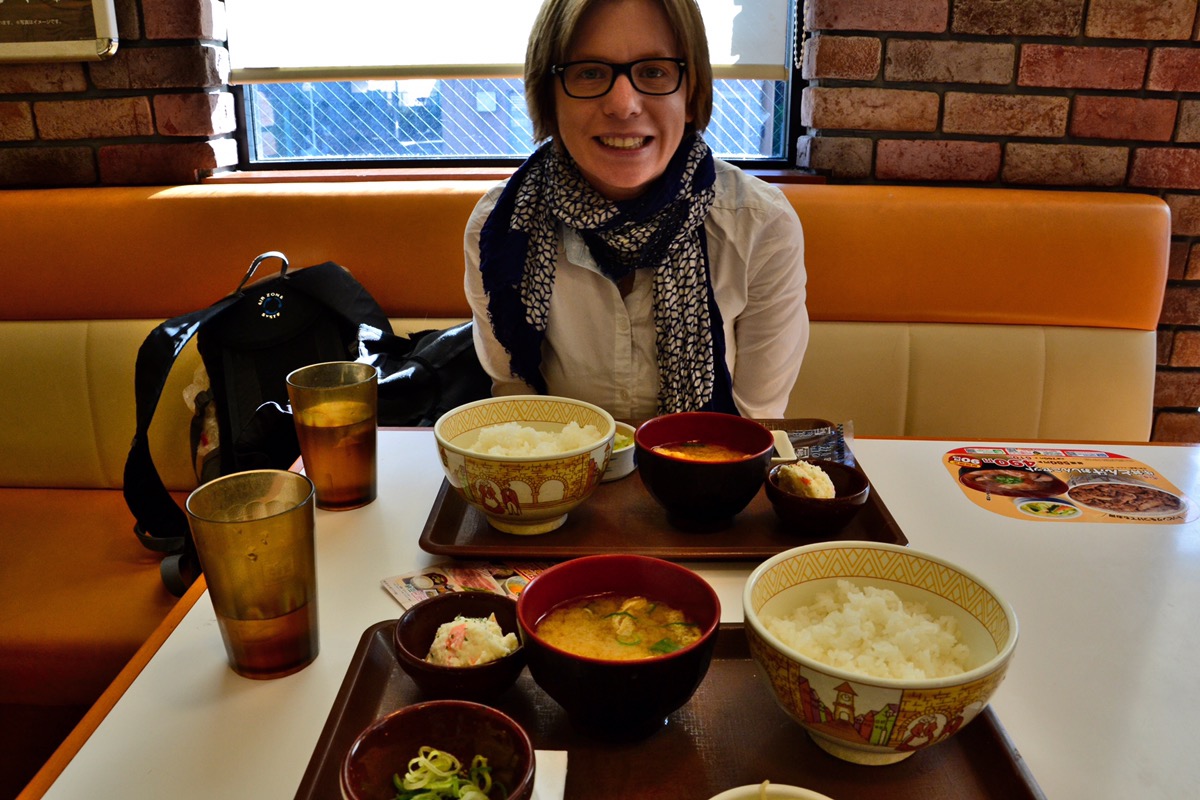
Shabu Shabu
Shabu-Shabu is a delicious kind of fondue but with two different soups, very thin sliced meat (1.4 mm) and a lot of vegetables.
Okonomiyaki
Japanese pizza is a specialty in Hiroshima and Osaka consisting of layered noodles, cabbage and pork, prepared on a hot stone.
Ramen
Throughout our route in Japan we had different traditional Japanese Ramen as lunch – and we were never disappointed.
Samurai eight-course dinner on Christmas Eve
Back in Kyoto on Christmas we enjoyed a samurai eight-course dinner with typical meals of the samurais. It included Japanese soy beans, pickles, raw fish, fried tofu, beef, pork belly and green tea tiramisu – everything what gives power and enables a long life.

Final note on Japan
Our 18 days in Japan are already over but we enjoyed every day in this beautiful and very clean country even with some days being rainy and having snowfalls in the mountains. The cultural heritage is amazing huge and incredible colorful. Although the days were quite short due to the winter time, the speed limits on the streets and the crowded cities we have seen a lot of sights while driving around 3,200 km.
The majority of people we met spoke at least a bit English and many of them could also speak some words in German what surprised us. Japan was the last country with a rental car for the following two months. In the other South East Asian countries renting a car is not possible for foreigners. This means we have to reduce our luggage from around 35 kilos in order we can easier walk around and travel by bus with all of our staff. It seems that the Japanese language sounds to us the same way unfamiliar as Spanish in the beginning in Latin America. Otherwise we cannot explain why we always answer in Spanish when the Japanese ask or explain us something.
Our book recommendations
Travel Guides
 |
Lonely Planet Japan is your passport to the most relevant, up-to-date advice on what to see and skip, and what hidden discoveries await you. |
 |
Lonely Planet’s Best of Tokyo is your passport to the most relevant, up-to-date advice on what to see and skip, and what hidden discoveries await you. Sample the finest sushi or most satisfying bowl of noodles you”ll ever taste, explore the neon nightlife of Shinjuku, and find the best view of Mt Fuji. |
Novels
 |
Journey Under the Midnight Sun: Stark, intriguing and stylish, Journey Under the Midnight Sun is an epic mystery by the bestselling Japanese author of The Devotion of Suspect X. |
 |
The English-language debut of an exciting young voice in international fiction, selling 660,000 copies in Japan alone, Convenience Store Woman is a bewitching portrayal of contemporary Japan through the eyes of a single woman who fits into the rigidity of its work culture only too well. |
 |
The Gun – A Tokyo college student’s discovery and eventual obsession with a stolen handgun awakens something dark inside him. |
 |
Yakuza Moon: Memoirs of a Gangster’s Daughter – Born to a wealthy and powerful yakuza boss, Shoko Tendo lived the early years of her life in luxury. However, when she was six, everything changed: her father was jailed, and the family fell into debt. Bullied by her classmates because of her father’s activities, and terrorized at home by her father, Tendo rebelled. As a teenager she became a drug addict and a member of a girl gang. |
Travelogue & Non-Fiction
 |
14 Days in Japan: A First-Timer’s Ultimate Japan Travel Guide Including Tours, Food, Japanese Culture and History – Are you thinking about traveling to Japan? Discover Japan through this easy to follow guide tailored for first-time travelers! |
 |
Cool Japan Guide: Fun in the Land of Manga, Lucky Cats and Ramen – Traveling to Japan has never been so much fun—visit the land of anime, manga, cosplay, hot springs and sushi! |
 |
Culture Smart! Japan will guide you through modern Japan’s shifting social and cultural maze. It provides invaluable insights into people’s attitudes and behavior, and practical tips to help make your visit to this complex, rich, and dynamic society a mutually rewarding experience. |
Cookbooks
 |
Ramen – From backstreet Tokyo diners to the hottest establishments in LA, via the chic laid-back ramen bars of London’s Soho, you will find the most complex of flavor combinations, all in a single bowl. Including 50 mouth-watering recipes, from homemade broth and noodles to complementary dishes and sides s, this cookbook will transport you to the vibrant streets of Japan via your own kitchen. |
 |
Now, for the first time, Itoh’s expertise has been packaged in book form. The Just Bento Cookbook contains twenty-five attractive bento menus and more than 150 recipes, all of which have been specially created for this book and are divided into two main sections, Japanese and Not-so-Japanese. |
 |
Japan: The Cookbook has more than 400 sumptuous recipes by acclaimed food writer Nancy Singleton Hachisu. The iconic and regional traditions of Japan are organized by course and contain insightful notes alongside the recipes. The dishes – soups, noodles, rices, pickles, one-pots, sweets, and vegetables – are simple and elegant. |



